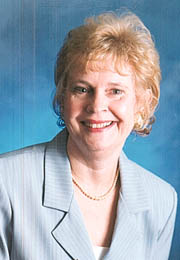Adam S. Frankel,
Marine Acoustics, Inc.
By Martie Callaghan
Was it the term paper
he wrote on gray whales, the sea camp he attended in junior high,
or all of those summers hanging out at the beach that drove Adam
Frankel toward a career in oceanography and biology? Probably
all of the above.
 With a clear sense of direction, Frankel began his undergraduate
work in the laboratory at the College of William and Mary, where
he earned his bachelor of science degree in biology. After completing
a rather frustrating study on the physiology of blue crabs ("they
are very hard to keep in captivity"), Frankel decided to make
a minor course adjustment. "I thought field work would be easier
[than lab work]," he says, "and that is the biggest joke. In the
lab, you just have to worry about the crabs. In the field you
have weather, wild animals---the whole world."
With a clear sense of direction, Frankel began his undergraduate
work in the laboratory at the College of William and Mary, where
he earned his bachelor of science degree in biology. After completing
a rather frustrating study on the physiology of blue crabs ("they
are very hard to keep in captivity"), Frankel decided to make
a minor course adjustment. "I thought field work would be easier
[than lab work]," he says, "and that is the biggest joke. In the
lab, you just have to worry about the crabs. In the field you
have weather, wild animals---the whole world."
Shortly after enrolling in the graduate program at the University
of Hawaii, Frankel learned of a project in Glacier Bay, Alaska,
to study the effects of vessel traffic on whale behavior. "When
you're twenty-something years old and somebody says, 'Go to Alaska
and study whales,' you tend to go in that direction," he recalls.
"I spent six weeks in Glacier Bay. It was cold and rainy---a wonderful
place to be. That was my introduction to humpback whales, and
it was a good one."
The following winter, Frankel worked on a sound playback experiment
with the humpbacks in Hawaii. "You play back a recording of natural
or artificial sound to the animal in order to see how the animal
responds," he says. "It's a good tool. They do it a lot with birds."
The whales also have a "song" which covers a wide range of pitches
and tones and can last from five to 45 minutes. "You have to be
under water or very close to the animal to hear the song with
the human ear," Frankel explains.
"Using acoustic location techniques, listening and looking, we
are able to learn a lot about how [whales] use their environment
[and] their habitat preferences," Frankel says. "Their song almost
certainly has many functions in their social system, to increase
distance between each other and, I believe, to advertise their
position and possibly their quality as a mate. The same sort of
direction that led to showy plumage, or sexual selection, probably
led to evolution of the complex whale song."
The whales were in Hawaii during the winter for breeding, after
their migration from Alaska where they had spent the summer feeding.
The experiment utilized a recording of a humpback whale feeding
call which the scientists believed would have no meaning to the
whales because they were focused on breeding. "We were quickly
proven wrong," Frankel recalls. Apparently, the recording chosen
for the experiment was made by a female whale and, although the
call was a feeding call, the males in the area were interested
in breeding and detected only that the sound was made by a female.
"We got a rapid approach response, where an animal up to a mile
away will very quickly turn and swim at a high rate of speed directly
toward the boat that is broadcasting the sound, sometimes generating
bow waves," Frankel says. "Sometimes they will swim under the
boat; sometimes they will circle it."
An interesting addendum to that experiment is the story of Humphrey,
a whale that lost his way and swam up a river in California in
1985. A copy of Frankel's playback experiment tape was sent immediately
from Hawaii to scientists in California. They played the recording
as a lure for Humphrey, and he followed it all the way out into
the bay.
Prior to Frankel's project, only one other scientist had done
playback experiments with humpback whales. "That work continued
for three more years," he says. "Then I got my master's in zoology
at the University of Hawaii at Manoa."
Frankel completed his Ph.D. in oceanography at the University
of Hawaii in Manoa in 1994. For the next six years, he served
as a post-doctoral research associate at Cornell Bioacoustics
Research Program, where he studied the effects of low frequency
sound on marine mammals. "We will continue to learn more about
how sound affects animals and be able to manage that," he says.
In 2000, Frankel joined Marine Acoustics, Inc., as senior scientist,
first at the company's main technology office in Arlington, Va.
When the Annapolis office opened a year and a half ago, Frankel
was very happy to transfer. "I spent most of my life in small
towns," he says, "and Annapolis, for me, is just about the right
size. I like being near the water because that's what I do."
Currently, Frankel is program manager in the development of a
simulation software product for Marine Acoustics, Inc., called
the acoustic integration model (AIM). Applications include cause
and effect studies of noise in the ocean, oil spills, "anything
moving through an environment," Frankel says. "With this simple
software, we can model what the ocean is like, what the animal
population is like and what conditions are like at different locations
and at different times of the year. We can then make predictions
and be able to choose scenarios to minimize effects. In the same
way, we can simulate how oil spills move, what techniques to employ
in clean up and how to deflect animals away from the spill.
"There are lots of interesting scientific questions. Why do humpbacks
sing? Why this and why that? It's very entertaining and fulfilling
for me to face the challenge of answering those questions. But
at the end of the day, any biologist who works with threatened
and endangered species has the duty to do what he or she can for
the animal, as well. That is important to me, and I think it should
be important to everybody---and I'm able to still do both sides
of the coin."
 Martie
Callaghan is a freelance writer and native Marylander who
enjoys spending time with her five grandchildren. Martie
Callaghan is a freelance writer and native Marylander who
enjoys spending time with her five grandchildren.
|
Back
|

